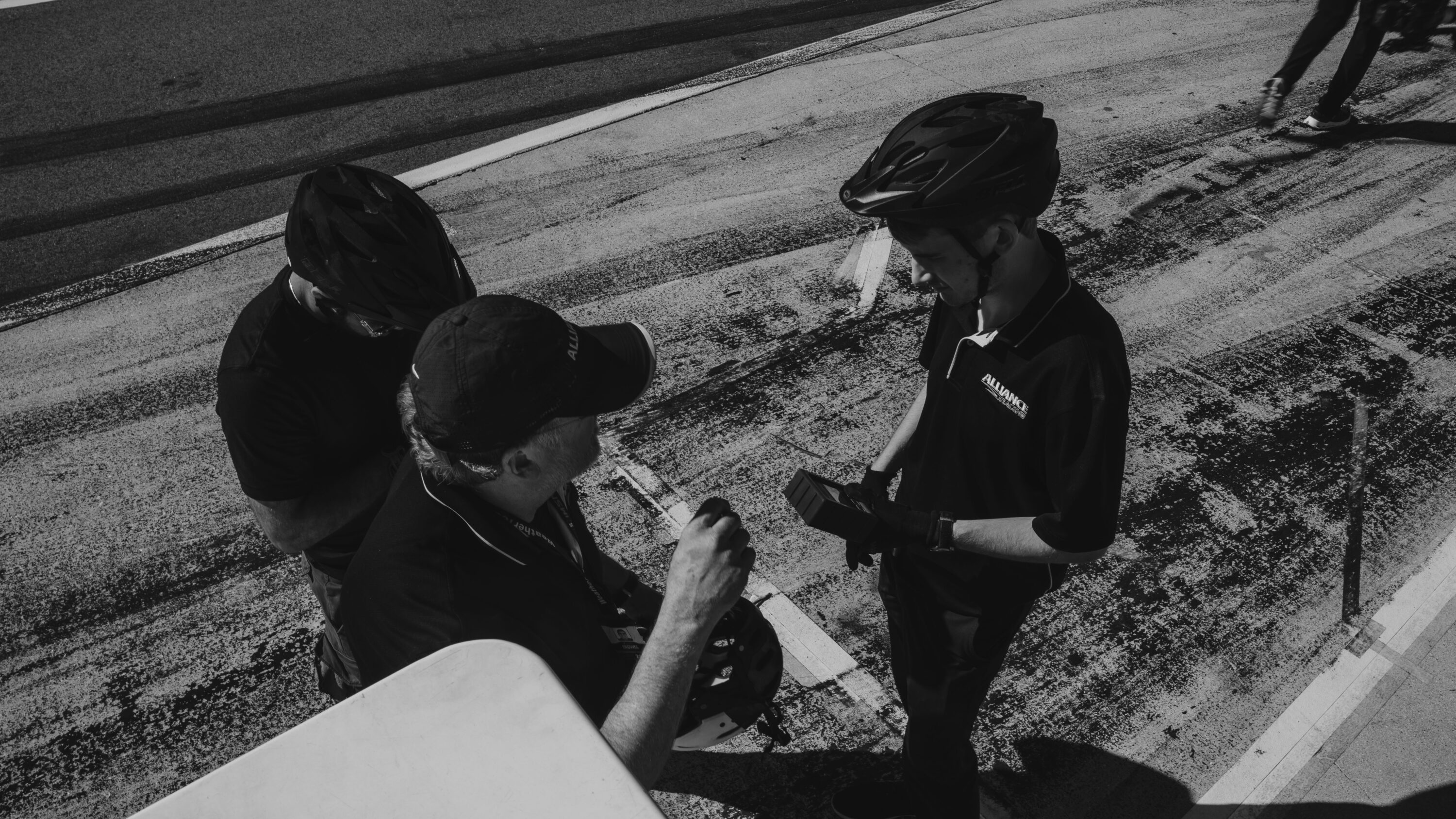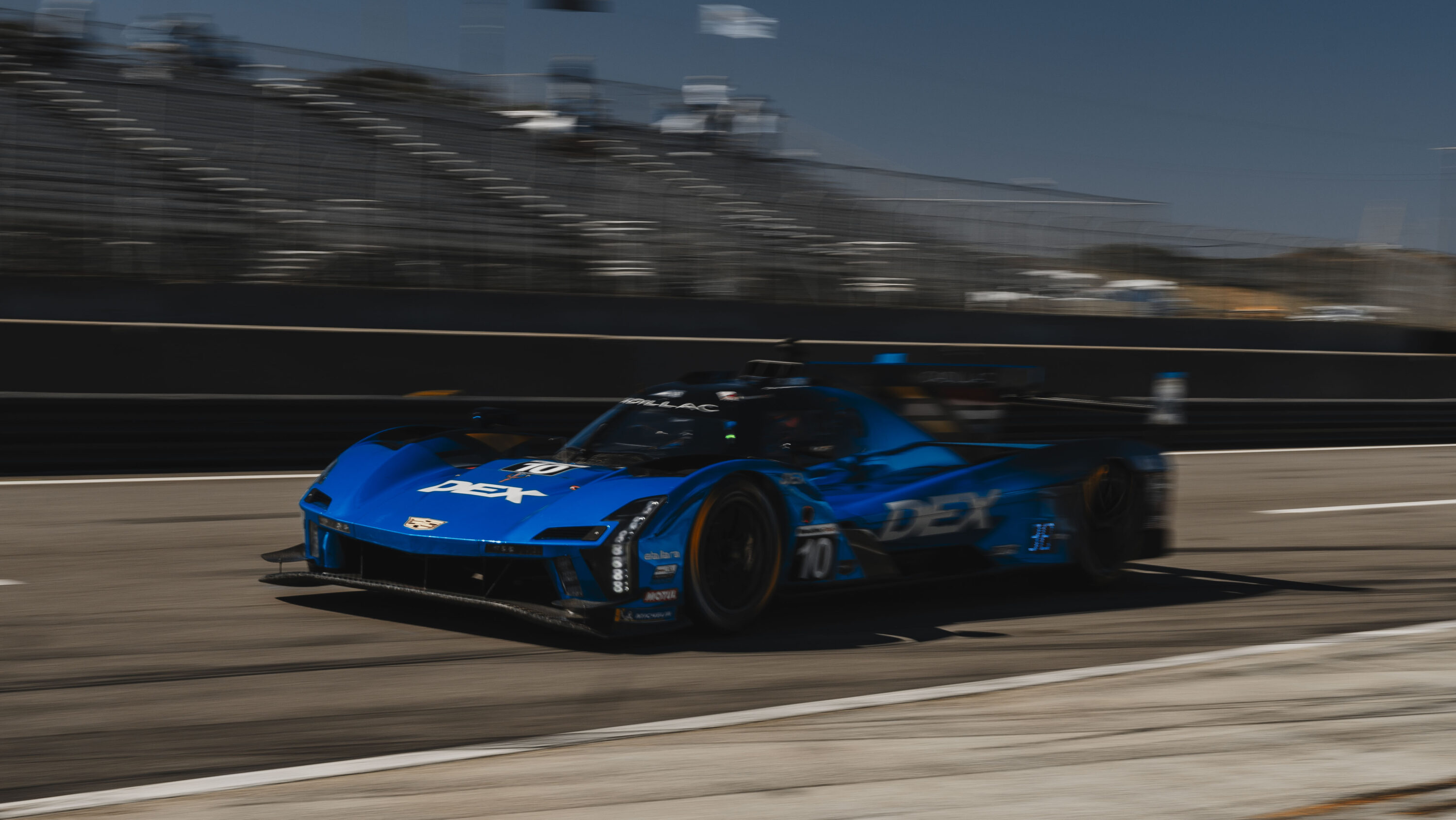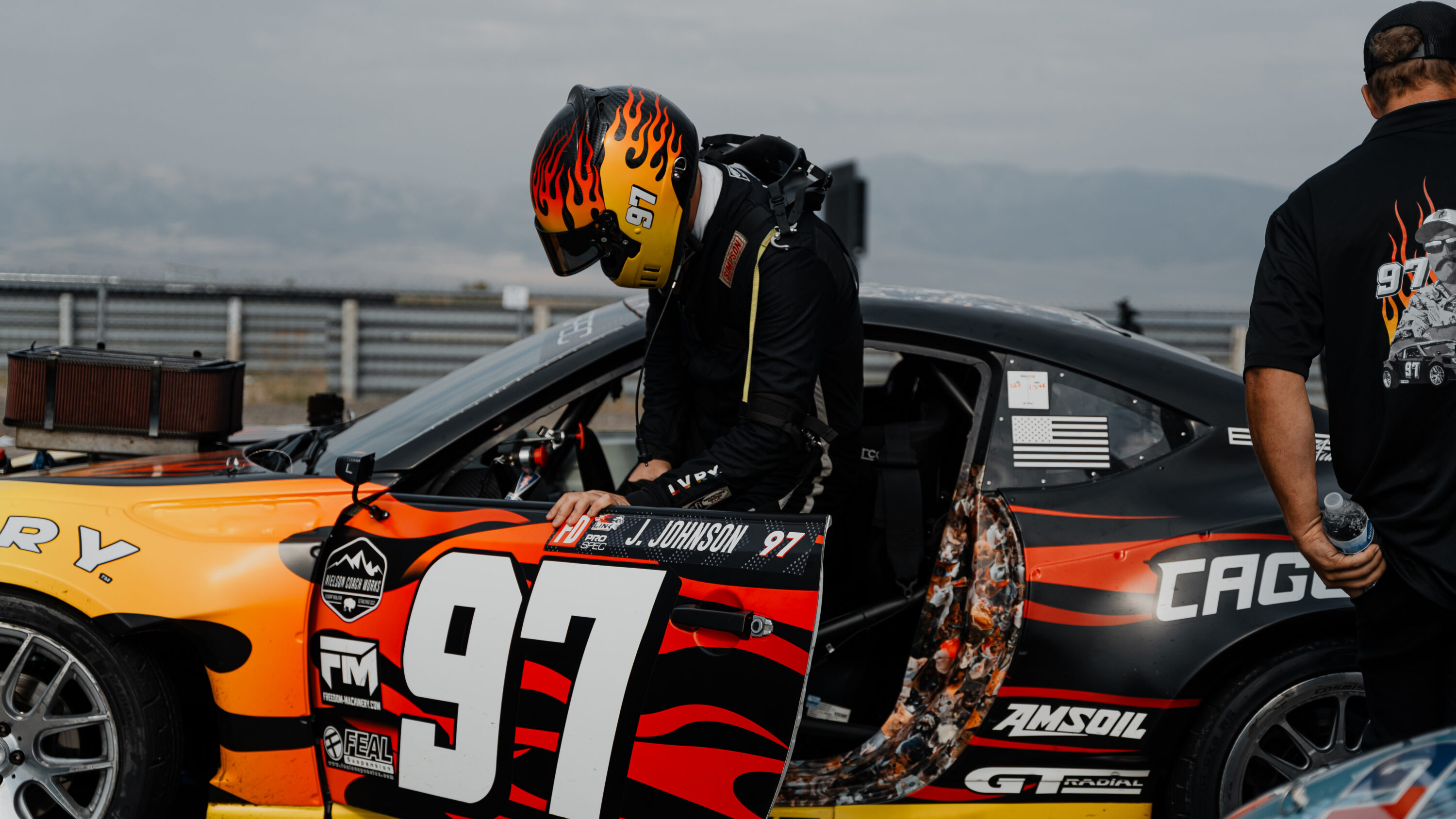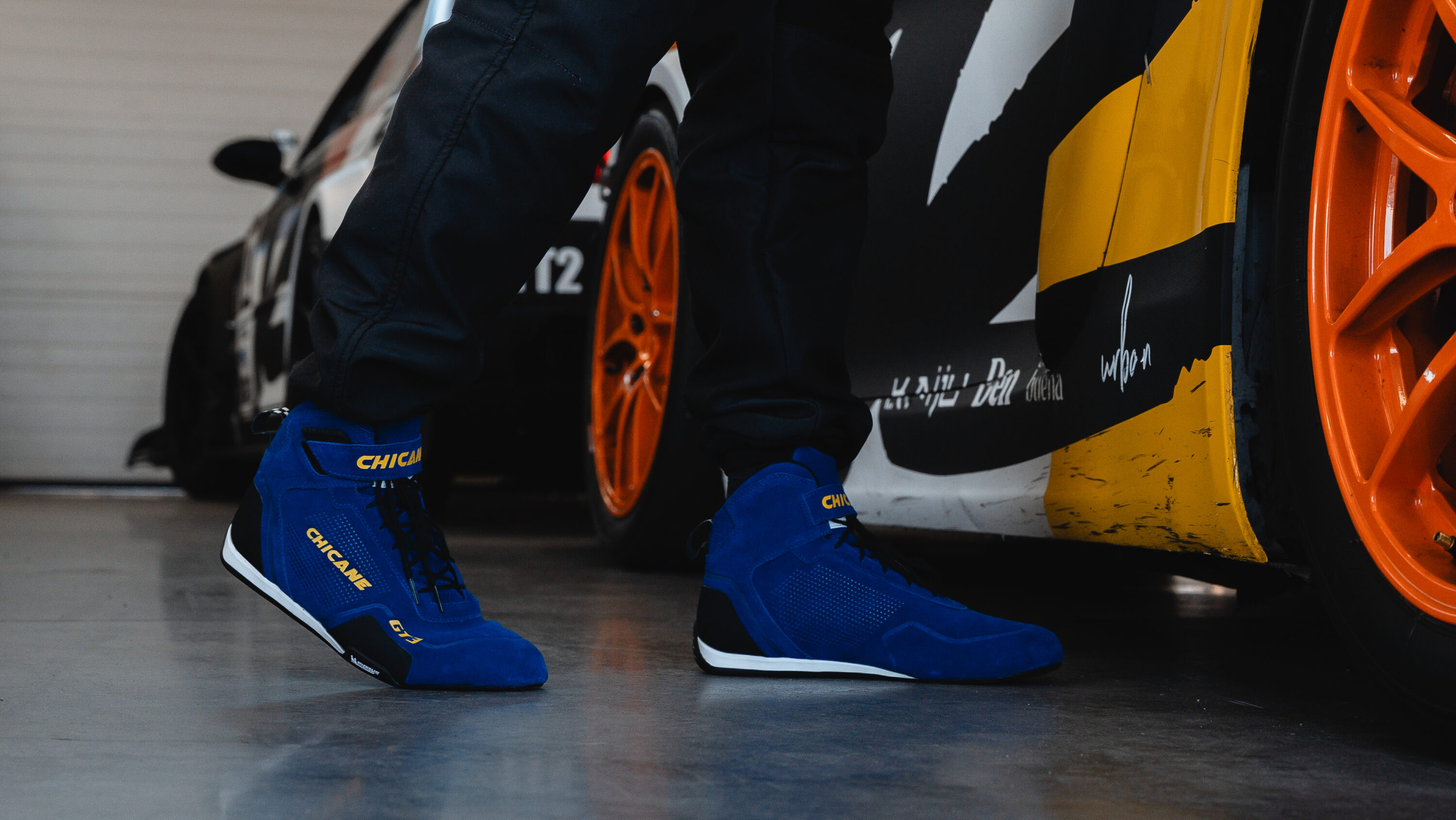Photo Credit: DAAR Creative | David Arellano
How to be fast, fast when adapting to a new or changing car.
Recently, I raced at a Lucky Dog event — a 7-hour race on Saturday, and another on Sunday — along with a couple of good friends (who just happen to be great drivers, too). As these kinds of events go, there wasn’t much time to learn the car. It was pretty much just jump in and figure it out as quickly as possible.
Then, a few days later, Jeff Braun and I recorded an episode of the It’s Not The Car podcast all about adapting to a car that is new to you — or one that you’ve made big changes to. That discussion was focused on both driving and car setup/tuning.
Adapting to a new car is all about learning where the limits of the car are, and the way it responds to inputs.
Not surprisingly, between these two recent experiences, I’ve put some thought into the process you can take to learn to find the limits of a car that is new, or new-ish, to you. In fact, I mostly just thought back to what I’d done last weekend at Sonoma.
Braking
First, I wanted to get a feel for the overall grip level the car had, and the best place to start was in the brake zones. Picking one of the longest and straightest brake zones, I varied how hard and quick my initial application was, and I first did that knowing that I was braking a little bit early. As I got a feel for how quickly the car slowed, I then moved the entire brake zone in incrementally until I felt that I was getting close to the right corner entry speed — not perfect, but close. What this really told me, though, was how much grip the car/tires had — what the deceleration rate was like. Not that I could actually read or measure the g-loads, but let’s say the car generated 1.2 g’s in deceleration forces, and I got a feel for that.
The second part of my “braking tests” was more about feel. Did the car like when my initial application was very quick, ramping up to maximum pressure almost immediately, or was a slower squeeze of the pedal more efficient? Could I maintain the same pressure through some of the brake zone, or did I need to bleed off a bit of pressure throughout it? How stable was the car? Did the rear feel like it was wiggling around, or was the front hunting a bit from side to side over any undulations or surface changes? Did I feel confident in the brakes?
The final aspect of testing the brakes was in being aware of how the release, easing off of the pedal, felt. With some brakes, they feel as though they almost stick on, and then suddenly let go of the bite in the pads-to-rotors friction; others release so smoothly you can barely feel it. So much of that is how you ease off the pedal, so I was noticing how subtle and gentle I needed to be.
With this information in the back of my mind, the next focus was on corner entry.
Turn-in/Corner Entry
Over the course of two to three laps, I experimented with how quickly I turned the steering wheel into the slow, medium, and fast corners to see how the car reacted. Did the car feel responsive, or sluggish at turn-in? Did I feel the effort in the steering change as I turned in?
Then — and this is the critical part — how did the responsiveness change with different timing and rates of release of the brakes? Did the car respond, or even rotate, more when I slowly released the brakes, trail braking more? Or did that make it less responsive? Did trail braking ever feel as though it was overloading the front tires, or did the car react in a positive way? Most important, could I use the blending of the steering and brake release deliberately to make the car do what I wanted?
Mid-Corner
Early on, in the first half dozen or so laps, I would deliberately test the mid-corner grip by quickly turning the steering wheel further into the corner. If the car responded and went exactly where I pointed the steering, then I wasn’t at the limit; if it immediately induced understeer, then I knew I was at or around the limit; same thing if the car oversteered. All of these little “experiments” with the steering were small enough that I never once worried that the car was going spin off into the weeds! But, in the process of doing this, I noted the amount of g-load the car was generating, and compared it to what I felt in the heaviest of brake zones. That was both for comparison purposes — was deceleration and lateral grip about the same, or different — but also to calibrate my feel for what the peak was.
Exit
Every car reacts differently in terms of the “un-blending” of unwinding (straightening) the steering wheel and the feeding in of throttle. Some cars require your hands/steering to almost be fully straight before you’re at full throttle, whereas others allow you to have quite a bit of steering angle in when you get back to full acceleration. That was my next focus, as I really paid attention to getting the best exits off all the corners.
Since I could overlap some these steps, all of this took half a dozen to maybe ten laps to get a really good feel for the car.
I’m not saying this is the only way of learning a new car, but it worked for me. And I think that having a process like this in mind is better than just “winging it.” I can’t say that I had this list taped on the steering wheel when I first went out in the car, but I had thought about “get a feel for the brakes, then corner entry, then mid-corner grip and balance, and then focus on exit speed” as I was getting belted into the car.
If you want the cool stuff around this topic, tune into It’s Not The Car podcast. Why? Because Jeff Braun shares how he approaches engineering a car that is new to him; and he and I relate the driving stuff to the setup stuff, and vice versa.
P.S. – Even after a few hours of “learning this car,” I was still doing most, if not all, of the same stuff I mentioned above. Why? Because all of this is what I needed to sense, feel, and drive the limit on a consistent basis. So, what I just described actually applies to practically all of your driving.
– Ross Bentley
/////
Ross Bentley has spent a lifetime helping drivers go faster. He’s the author of the Speed Secrets books (the best-selling racing series ever), is one of the most sought-after driver coaches in the world, and runs SpeedSecrets.com, the largest collection of driver development resources anywhere. Want more articles like this? Subscribe at RossBentley.Substack.com.







